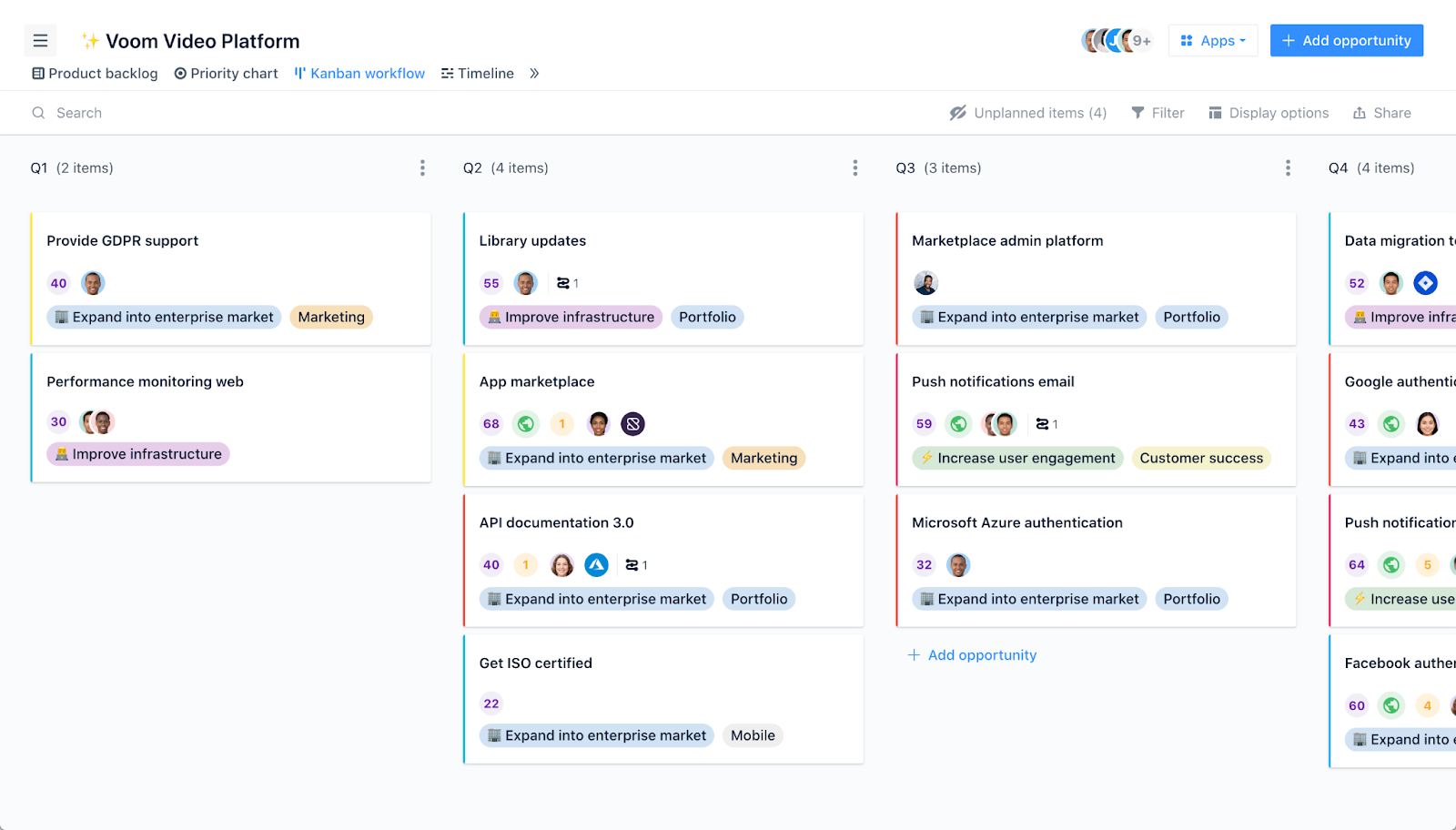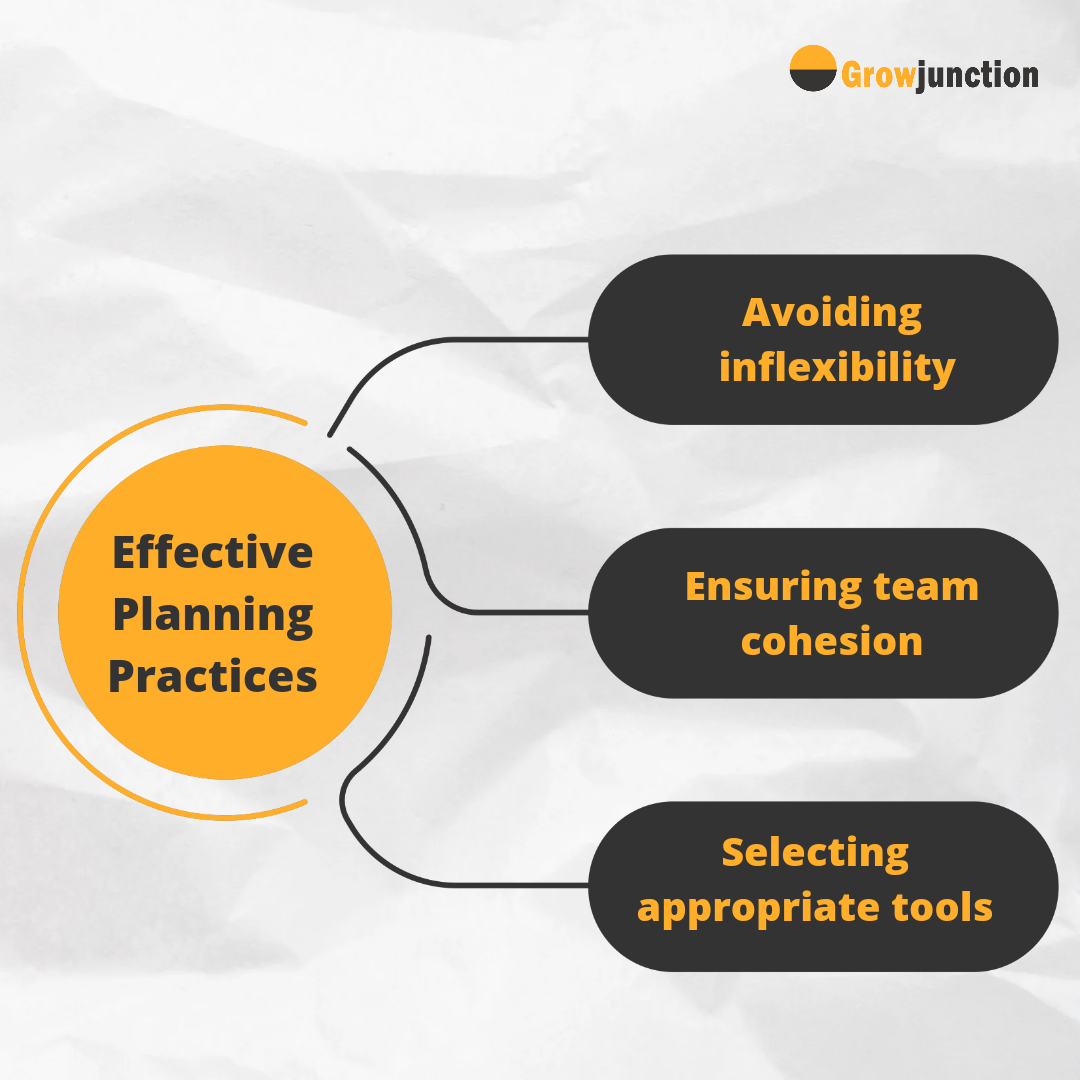There are no items in your cart
Add More
Add More
| Item Details | Price | ||
|---|---|---|---|

Quarterly roadmaps or quarter roadmaps usually happen over a longer stretch of time: a calendar quarter. They help you properly structure a longer-term product roadmap and decide how you plan to execute your plan within the quarter. Let’s look at how these larger-scale roadmaps work and the best ways to construct them.
What is a quarter roadmap?
Quarterly product planning bridges the gap between the early planning stage, when the product vision is vague and complex, to the specific planning phase, when all the details are laid out. They can help you illustrate the product’s direction, what actions you’ll take to achieve your goals, and what stakeholders can anticipate.
Quarter roadmaps allow teams to focus on the company’s specific needs at a specific time. Retention, market expansion, and conversion are goals present in every business, but they fluctuate depending on the time of year, quarterly business goals, and much more. So, planning quarterly can help companies better align their product planning with the ebb and flow of their needs.
OKRs and quarter roadmaps: where the magic happens
Combining OKRs (Objectives and Key Results) and quarter roadmaps is a great way to go if you’re looking to leave behind outdated timeline roadmaps. OKRs give you a framework for measuring and setting objectives, which you can then use to add purpose and structure to your perfect quarter roadmap.
Although objectives and key results are the main components that will guide your roadmap, it’s also crucial to consider what makes everything move: initiatives. Initiatives describe what specific activity your team is working on to guarantee the success of an OKR, so they’re essential to include in your roadmaps.
Clearly communicating your planned actions (initiatives) will help unite what needs to be achieved based on business strategy (objective) and what a good result looks like (key results). Mapping out the initiatives on a quarterly roadmap is important to communicate how your team will solve problems and successfully hit objectives.
A step-by-step guide to start working with quarter roadmaps

Let’s look at what quarterly planning looks like in practice.
1. Define the OKRs for the next quarter
Company and team goals change from one quarter to the next, so make sure your OKRs for the next quarter support your organization’s current needs.
2. Prioritize, brainstorm, and align initiatives to goals
During this stage, you need to start planning. Organize and prioritize initiatives depending on what goals your team has this quarter. Essentially you want to prioritize and discuss on a continuous cadence the initiatives that should be added to each of the quarters to meet your quarterly and longer-term objectives to solve customer problems. This is a good place to use popular product prioritization frameworks
3. Identify bottlenecks or resourcing needs by collecting a high-level estimate
Generally, there are top-down and bottom-up estimation sets. Bottom-up estimation is not very helpful during this stage, but using top-down high-level estimation is essential to prevent misunderstandings or misalignments between the engineering and product teams.
4. Create a high-level roadmap and communicate with stakeholders

After the estimates and priorities are clear, it’s a good idea to create several roadmap scenarios to compare and share with stakeholders. This way, they can align with your team’s goals and form realistic expectations.
This roadmap can be easily structured in a board view and stacked by quarters for each column, as you can see in the image below
3 mistakes to avoid when creating quarter roadmaps
So now you know what to do when planning quarterly, but here are a few things not to do.
1. Don’t be inflexible
While a quarter roadmap is a solid plan, it is essential to stay flexible. Its job is to capture the goals you and your team are working towards over the next months. However, priorities can always shift, and unexpected issues may appear. That’s why it’s crucial to be able to adjust accordingly.
2. Don’t jump ahead
Some agile teams prefer to work ahead of other teams, but it’s important to keep everyone on the same page for the whole course of the project. A quarter roadmap can help you regularly check in on all teams’ progress and prioritize and re-assign tasks if some members prove quicker than others.
3. Don’t use PowerPoint for a quarter roadmap
While you can create a decent roadmap in PowerPoint, a spreadsheet, or other similar software, it’s really not the best approach. Time is always of the essence, and manually creating a roadmap can take way too long. Plus, updating a multi-quarter roadmap in PowerPoint can be complicated and buggy. Sharing it with stakeholders or teams can also be a back-breaking task — PowerPoint just isn’t the right tool for the job.
Join upcoming Product Management Program
https://www.growjunction.com/s/pages/productmanagement